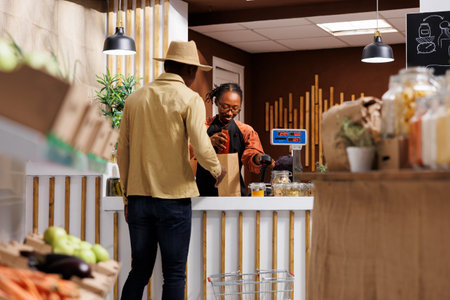Overview of the Franchise Landscape in America
When you think about business opportunities in the United States, franchising stands out as one of the most popular ways to become your own boss. From the golden arches of McDonalds to your neighborhood gym or favorite retail store, franchises are everywhere—and for good reason. The franchise industry in America is a powerhouse that fuels job growth and economic activity across all 50 states.
Let’s take a closer look at why franchising is so appealing and how big it really is:
Why Entrepreneurs Choose Franchising
- Proven Business Model: Franchises offer a ready-made blueprint for success, reducing the risks that come with starting a new business from scratch.
- Brand Recognition: Many franchises are already household names, making it easier to attract customers from day one.
- Training & Support: Franchisors usually provide extensive training and ongoing support, which helps new owners navigate challenges.
- Easier Financing: Lenders are often more willing to finance franchise businesses because of their track record and established systems.
The Economic Impact of Franchising in the US
| Statistic | Details (2023 Estimates) |
|---|---|
| Total Franchise Establishments | Over 800,000 locations nationwide |
| Jobs Created by Franchises | Around 8.7 million jobs |
| Total Economic Output | $825 billion annually |
| Main Franchise Sectors | Fast Food, Fitness, Retail, Services, Lodging, Automotive |
Popular Franchise Industries: A Quick Look
The three industries that consistently top the charts are fast food, fitness, and retail. Each offers different opportunities for entrepreneurs based on investment level, growth trends, and consumer demand. In upcoming sections, we’ll dive deeper into what makes each of these industries unique and how they stack up against each other.
2. The Fast Food Franchise: Pros, Cons, and Key Players
Overview of the Fast Food Franchise Industry
The fast food industry is one of the most recognizable and accessible franchise sectors in the United States. Brands like McDonald’s, Burger King, and Subway are household names, and their golden arches or logos are seen in almost every city. This sector thrives on quick service, convenience, and affordability—three things American consumers value highly in their busy daily lives.
Major Brands and Key Players
| Brand | Initial Investment Range | Number of U.S. Locations | Famous Menu Item |
|---|---|---|---|
| McDonald’s | $1M – $2.3M | ~13,500 | Big Mac |
| Burger King | $316K – $2.7M | ~7,000 | Whopper |
| Subway | $207K – $476K | ~20,000 | Footlong Sub |
| Taco Bell | $576K – $3.4M | ~7,800 | Tacos & Burritos |
| Dunkin’ (formerly Dunkin’ Donuts) | $438K – $1.8M | ~9,300 | Coffee & Donuts |
Consumer Demand and Market Trends
Fast food franchises benefit from steady consumer demand driven by Americans’ need for quick meals at affordable prices. Fast food is especially popular among families, students, and workers looking for a fast bite during lunch breaks or after school activities. While there’s always competition from healthier options, drive-thru convenience and menu variety keep these chains busy year-round.
Entry Costs and Requirements
The cost to open a fast food franchise can vary widely based on location, brand reputation, restaurant size, and equipment needs. Some brands have lower entry costs but higher ongoing royalties or advertising fees. Here’s a quick comparison of common expenses:
| Expense Type | Description/Example Cost Range (USD) |
|---|---|
| Franchise Fee | $15,000 – $50,000+ |
| Total Initial Investment | $200,000 – $3 million+ |
| Royalty Fees (ongoing) | 4% – 6% of gross sales (varies by brand) |
| Advertising Fees (ongoing) | 2% – 5% of gross sales (varies by brand) |
Operational Challenges in Fast Food Franchising
This industry is known for its fast pace and high employee turnover. Owners must be ready to manage large teams—sometimes with dozens of employees per location—and deal with fluctuating labor costs. Inventory management is also crucial because fresh ingredients must be delivered frequently to keep up with volume. On top of that, maintaining strict health codes and brand standards adds extra pressure.
Main Operational Challenges:
- Staff Recruitment & Training: High employee turnover means constant hiring and training.
- Quality Control: Ensuring every burger or sandwich meets the same standard.
- Speed vs. Service: Balancing quick service without sacrificing customer satisfaction.
Profitability Potential in Fast Food Franchises
The fast food sector can offer solid profits if you pick a good location and manage operations well. However, margins can be tight due to heavy competition and rising costs for labor and supplies. Volume is key: the more customers served quickly, the better the chance for strong earnings.
| Profit Factor | Description/Impact on Profits |
|---|---|
| Location Quality | Main street/high traffic areas bring more sales |
| Loyalty Programs | Encourage repeat business |
| Labor Efficiency | Saves money; improves profit margin |
The bottom line: Fast food franchises are a proven path for entrepreneurs who want a well-known brand with steady demand—but they do require careful planning, hands-on management, and an appetite for long hours.

3. The Fitness Franchise: Growth Trends and Market Appeal
The Rise of Fitness Franchises in America
In recent years, the fitness industry has become one of the fastest-growing sectors in the U.S. franchise world. From affordable 24-hour gyms to trendy boutique studios specializing in yoga, cycling, or HIIT, Americans now have more choices than ever when it comes to getting fit. This surge is driven by a growing awareness of health and wellness, an increasing desire for community-oriented experiences, and the popularity of social media fitness trends.
Types of Fitness Franchises
| Type | Main Features | Popular Examples |
|---|---|---|
| Budget Gyms | Low monthly fees, basic amenities, open 24/7 | Planet Fitness, Anytime Fitness |
| Boutique Studios | Specialized classes, premium experience, small group focus | Orangetheory Fitness, Pure Barre |
| Personal Training Studios | One-on-one coaching, customized programs, higher price point | 9Round, Snap Fitness (with personal training) |
| Specialty Concepts | Niche markets like boxing, dance fitness, or pilates | Title Boxing Club, Club Pilates |
Market Drivers Behind Fitness Franchise Growth
- Health Consciousness: More Americans are prioritizing physical and mental health.
- Community Experience: Boutique studios create a sense of belonging and accountability.
- Flexible Memberships: Monthly plans and no long-term contracts make joining less risky for consumers.
- Technology Integration: Fitness apps and wearable devices connect members to workouts both inside and outside the gym.
- Diverse Demographics: Offerings for every age group and fitness level attract a broad customer base.
The Competitive Landscape and Unique Challenges
The fitness franchise market is crowded and competitive. Big chains compete with local independent gyms and new boutique concepts pop up regularly. To stand out, franchises need to offer unique classes, top-notch customer service, and engaging member experiences. Location is key—gyms need to be convenient for busy lifestyles.
However, there are challenges that come with this growth. High turnover rates among members can make revenue unpredictable. Franchisees must keep up with trends in equipment and programming to stay relevant. Economic downturns or public health issues (like the COVID-19 pandemic) can also cause sudden drops in membership. Finally, operating costs—such as rent, staff salaries, and equipment—can be substantial compared to other franchise types like fast food or retail.
Key Takeaways on Fitness Franchises vs. Fast Food & Retail
| Fitness Franchises | Fast Food Franchises | Retail Franchises | |
|---|---|---|---|
| Main Attraction | Health & Wellness Lifestyle | Quick Meals & Convenience | Diverse Products & Shopping Experience |
| Main Challenge | High Member Turnover; Trend Sensitivity | Tight Margins; Competition on Price/Speed | E-commerce Disruption; Inventory Management |
For entrepreneurs considering a franchise investment in the U.S., understanding the unique appeal and hurdles of each industry is essential for success.
4. The Retail Franchise: Opportunities and Current Challenges
Exploring the Retail Franchise Landscape
The retail franchise sector covers a wide range of business models, from convenience stores like 7-Eleven to specialty shops selling everything from cell phone accessories to gourmet chocolates. In the U.S., retail franchises have long been an attractive option for entrepreneurs thanks to recognizable brands and proven operating systems.
Evolving Consumer Habits
American consumers are changing how they shop. Shoppers today expect convenience, fast service, and a seamless experience whether theyre buying in-store or online. This shift is pushing retail franchises to innovate quickly. For example, many convenience stores now offer mobile ordering, curbside pickup, and digital loyalty programs to keep up with customer expectations.
Omnichannel Strategies Are Key
Retail franchises that succeed often use omnichannel strategies—integrating their physical locations with online stores and apps. This means customers can browse products online, check inventory at nearby stores, and choose between home delivery or in-store pickup. Franchises that master this flexibility are more likely to thrive.
| Franchise Type | Key Offerings | Popular Omnichannel Features |
|---|---|---|
| Convenience Stores | Snacks, beverages, essentials | Mobile apps, curbside pickup, contactless payment |
| Specialty Shops | Coffee, electronics, gifts | Online ordering, loyalty rewards, local delivery |
| Legacy Chains | Apparel, home goods | Buy online/pick up in store (BOPIS), real-time inventory tracking |
The Challenge for Legacy Retail Chains
Long-established retail chains like Macy’s or RadioShack face unique challenges. While they benefit from strong brand recognition and nationwide reach, they sometimes struggle to adapt quickly enough to new trends and technologies. Many are investing heavily in updating their websites, launching apps, and reimagining the in-store experience with digital kiosks and personalized shopping services.
What’s Next for Retail Franchises?
The future of retail franchising in America depends on flexibility. The most successful brands will continue to blend digital convenience with personal service—offering shoppers choices on how and where they buy. Whether it’s a small specialty shop or a major chain, staying connected with customer needs is the name of the game.
5. Making the Right Choice: What’s Best for You?
Deciding which franchise industry to join—fast food, fitness, or retail—can be overwhelming. Each sector has its unique benefits and challenges, so its important to match your personal goals and situation with the right opportunity. Here are some key factors to consider before making your move:
Investment Requirements
Franchises can vary widely in terms of startup costs, ongoing fees, and necessary working capital. Here’s a quick comparison:
| Industry | Average Initial Investment | Ongoing Fees | Other Costs |
|---|---|---|---|
| Fast Food | $250K – $2M+ | Royalty & Ad Fees | Equipment, Supplies, Staff |
| Fitness | $50K – $500K+ | Membership Royalties | Fitness Equipment, Trainers |
| Retail | $100K – $1M+ | Inventory Fees | Stock, Store Fixtures, Staff |
Lifestyle Fit
Your daily routine will look very different depending on the type of franchise you choose. Consider these lifestyle factors:
- Fast Food: Often requires long hours, weekends, and a fast-paced environment. Great if you thrive on hustle and enjoy managing teams.
- Fitness: Can offer more flexible schedules, especially with 24/7 models or class-based businesses. Perfect if youre passionate about health and want to inspire others.
- Retail: Typically involves set store hours and customer-facing roles. Good fit if you like merchandising and helping people find what they need.
Market Trends & Demand
The success of your franchise can depend on current consumer trends and local demand. Here are some trends to watch:
- Fast Food: Continues to evolve with healthier menu options and delivery services gaining popularity.
- Fitness: Boutique studios, group classes, and wellness-focused concepts are on the rise. Americans prioritize health now more than ever.
- Retail: E-commerce is transforming traditional retail—unique experiences or specialty goods can help brick-and-mortar stores stand out.
Ask Yourself These Questions:
- How much can I realistically invest up front?
- Do I prefer hands-on management or a more passive role?
- What kind of work-life balance am I looking for?
- Which industries excite me most?
- What does my local community need most right now?
Your Next Steps
The best franchise industry for you is the one that matches your financial resources, fits your lifestyle preferences, and aligns with market opportunities in your area. Take time to research each sector thoroughly, talk to existing franchisees, and visit locations in person when possible. The right choice should feel both exciting and sustainable for your future as a business owner.

